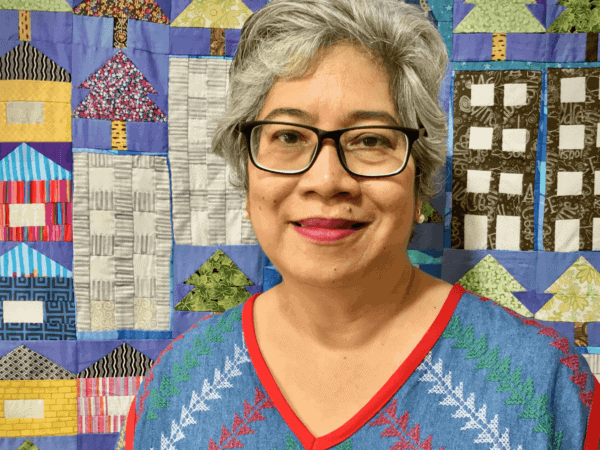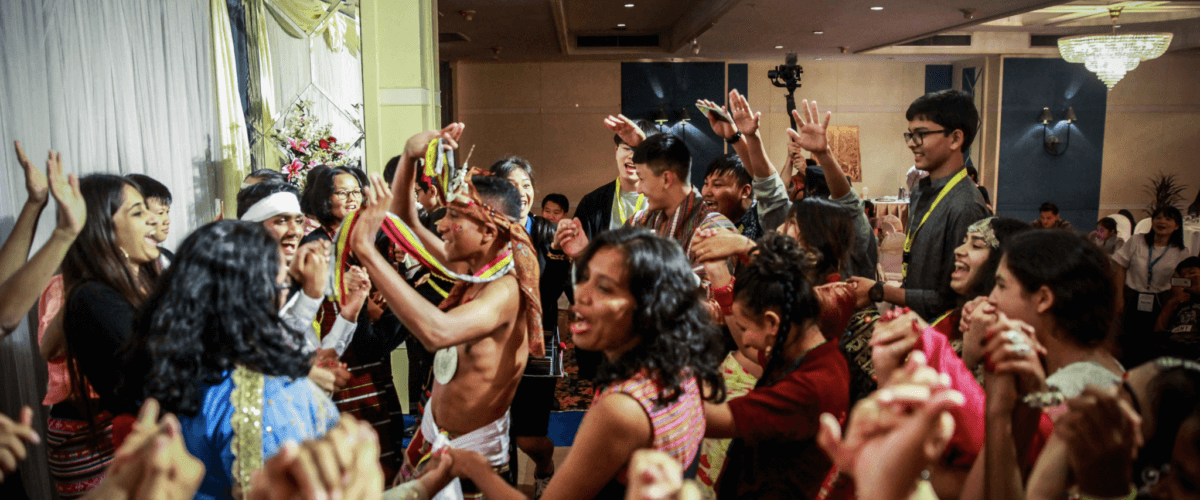CRC Asia are at the forefront of children's rights across the region, helping those in need in 13 countries. We sat down with them.
Through this piece we travel to Asia to speak with Amihan Abueva, the Regional Executive Director of Child Rights Coalition Asia (CRC Asia), who has been working for the rights of children in the past three decades.
Saying that doing this work requires strong solidarity among human rights defenders and therefore they operate as a coalition, in this interview with Youth Time she explains how their everyday work looks and what are the most crucial initiatives they support to build a world where all children live in dignity by fully enjoying and exercising their rights.
Abueva seized this opportunity to share her hope for the world to realise that the COVID-19 pandemic crisis presents an opportunity for leaders to help children develop their skills and leadership in civic engagements at all levels.
Read on to hear more from Abueva, who is a firm believer that children must not be viewed and treated as passive subjects of the pandemic response, but as active citizens who want to understand the pandemic and be involved in protecting themselves and the others.
The Importance of Working Together
Founded in 2012, CRC Asia comprises 16 member organisations from 13 countries in Asia.
“It is through our members that we can do our work in different countries. Our mission is to strengthen the voice of children in Asia.
“It is very important for us to do this and always work with children, for children.”
“Much has been done in the advancement of children’s rights but much is also left undone.”
Abueva further recalls that in 2019, the world celebrated the 30th Anniversary of the Convention on the Rights of the Child.

“During this time, together, we took stock of our progress but we also identified the gaps, we see these gaps in all the inequalities that children from different backgrounds and contexts around the world are experiencing, especially those children living in poverty, 30 years after the adoption of the Convention.”
As for the progress, she asserts, there are governments that recognise the rights of children and clearly articulate this through their constitutions, laws, policies, practices, and budgets.
“There are improvements in health and education outcomes.
“For example, the under-five mortality rate has declined, and the number of fully immunised children has increased.
“However, despite the progress and economic growth in the Asia region over the past 30 years, disparities in the enjoyment of rights persist between different children.”
In addition, children today are confronted with new threats in a rapidly changing society like climate change, online abuse and cyberbullying, problems of urbanisation.
“And even while children take action against these and claim their rights, one of the biggest challenges we are facing right now is the shrinking civic spaces and ensuring that children are recognised, protected, and empowered to execute their human rights work safely.”
They see this challenge happening in the Philippines, Myanmar, Hong Kong, and Thailand.
Child-rights Based Approaches
CRC Asia works every day to advance child protection and participation, child rights governance, and also promote innovative approaches.
Abueva shares their key initiatives.
“We seek to focus more on initiatives that have lasting outcomes for children and their realities. Our foundation is the United Nations Convention on the Rights of the Child and its Optional Protocols.
“Our approaches are child-rights based, meaning, we anchor them on the entitlements that children have, and the legal responsibilities and accountabilities of governments and other adults to commit to promote, protect, and fulfil these rights.”
Innovative approaches
The context in which children live varies, they have intersecting identities, and therefore CRC Asia is after innovative changes.
“That is why we strive to work towards innovative approaches so that our commitments to children are also met.
“As the adage goes; we can’t be doing the same things repeatedly and expect improving results,” Abueva asserts.
Child Participation
In Asia, conducive spaces for child participation need to be expanded both within civil society and in government.
Together with children, CRC Asia creates spaces and formal and informal platforms for their participation.
“Our aim is to make sure that they are given safe, conducive, and inclusive opportunities to form and express their views.

“Not only should they be enabled to take part, but their views should be acted upon appropriately by decision-makers.”
For example, arguably the first in Asia, together with other child rights organisations and intergovernmental regional bodies in Asia, they organised the Asian Children’s Summit in 2019.
Child Rights Governance
This means engaging governments towards better policies, systems, and structures necessary to make child rights a reality.
While governments are primarily accountable, the actors extend to the broader civil society and the private sector within interconnected systems.
Examples of work on child rights governance are policy, planning, and resource allocation, the budget being a clear articulation of government plans.
One example of this is their work on public budgeting for children’s rights.
Putting Together a Big Quilt
Among others, she is a quilting grandma too. Using the symbol of quilting during a workshop with city officials, she gives the message of staying together.
“There we made our individual quilts of our aspirations for children at the end of the workshop, brought them together into a big, collectively made artwork.
“To me, the small quilts put together into a bigger quilt is a simple way of showing how we work and how we get things done.”
CRS Asia Campaigns
The #SafeWeb4Kids, is a campaign for child online safety, a field CRC Asia has worked on for several years already.
“Together with children and with support from UNICEF we developed the #SafeWeb4Kids campaign and then we organised more activities with more children and other organisations.
“With all these learnings and experiences we, again together with children, also took part in and supported the development of the newly adopted General Comment No. 25 on children’s rights in the digital environment.
“Recently, we are also actively taking part in global, regional, and national campaigns to promote children’s right to a healthy environment.
“The climate crisis is real, and it is and will affect our children now and in the future. We are part of a global movement called the Children’s Environmental Rights Initiative (CERI).”
Collaboration and Solidarity
Clichés aside, Abueva asserts, what they have learned in the past years is the importance of collaboration.
“Advocacies and campaigns are only as strong as the solidarity of children, young people, and adults in a civil society that make up the movement.”
First, she goes on; we understand that what we have is not enough.
“We have a lot of experience, we have a lot of energy, and a lot of commitment but unless we can convince more groups to join us, the amount of influence that we will have will always be limited.”
She asserts that timing is also very essential.
“We have to learn to take advantage of key events or key movements and changes in society that can help to move our work forward.
“Even during the pandemic, there will still be opportunities for us to move forward.”
As per her viewpoint, even in the most trying of times, like this unprecedented pandemic, they need to be creative and look at the ways they do their work so they will reach out to more groups.
Young People Supporting CRC Asia
Since CRC Asia works with children and young people through their members in the different countries that support child-led and youth-led groups, she encourages them to connect and work with their members in the Philippines, Thailand, Cambodia, Vietnam, Indonesia, Lao PDR, Myanmar, Malaysia, Taiwan, South Korea, Hong Kong, Nepal, Pakistan.
“We are also part of a global survey and child participation initiative and platform called #CovidUnder19, where we work with children and young people, Terre des Hommes, Queen’s University Belfast, the Office of the United Nations Special Representative of the Secretary-General on Violence Against Children, and around 30 other coalitions and civil society organisations.”
At the office operations level, CRC Asia also welcomes students who are interested to take part in an internship program in their office in the Philippines.
For further information about the CRC Asia’s work and its activities, visit their website.
Photos: CRC Asia
CRC Asia have worked with Terre des Hommes before, an organisation that we have profiled before.
Terre des Hommes: A Half Century Long Aspiration for a Safer World for Children
Support us!
All your donations will be used to pay the magazine’s journalists and to support the ongoing costs of maintaining the site.
Share this post
Interested in co-operating with us?
We are open to co-operation from writers and businesses alike. You can reach us on our email at [email protected]/[email protected] and we will get back to you as quick as we can.










